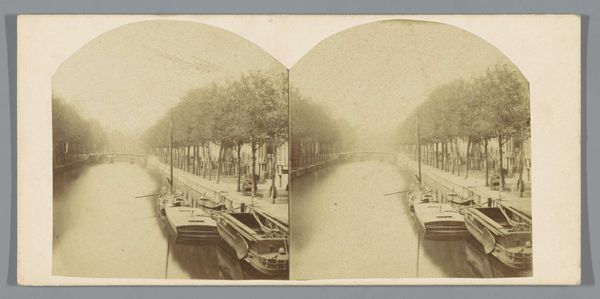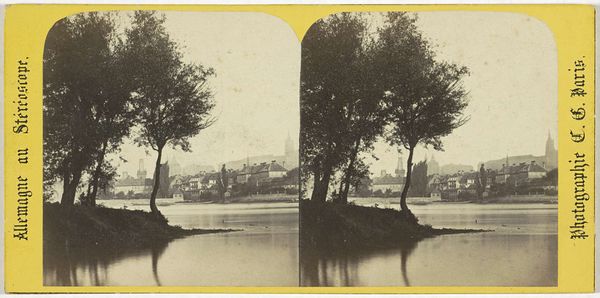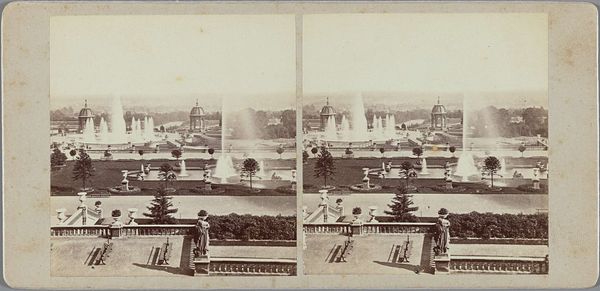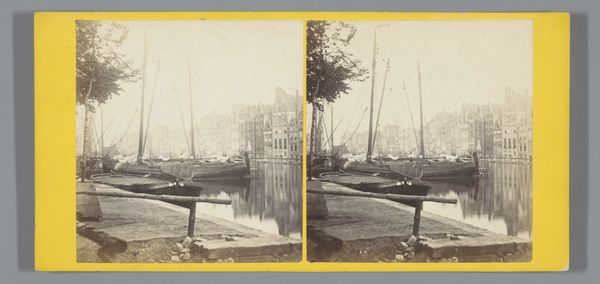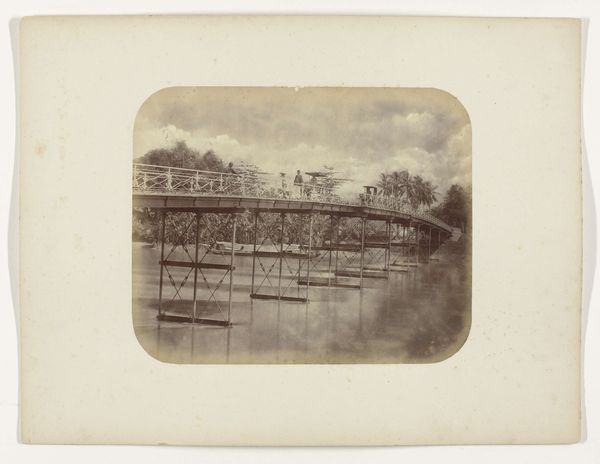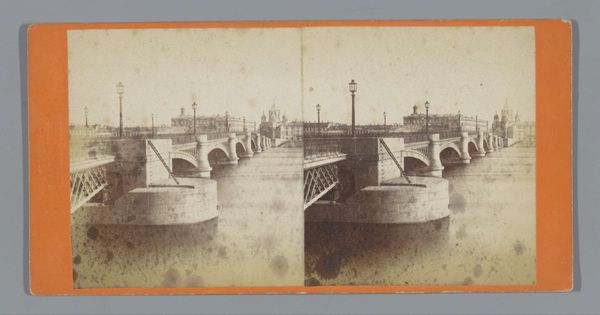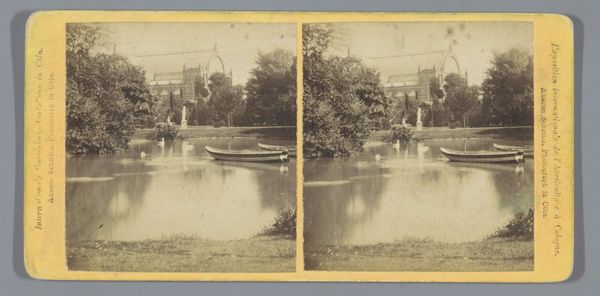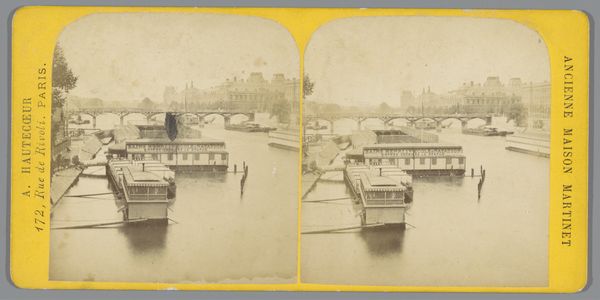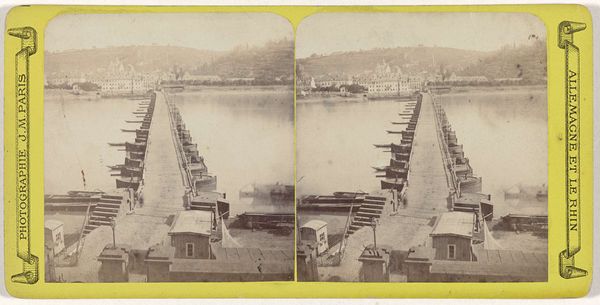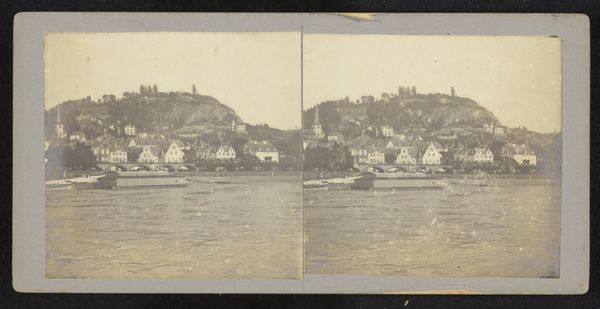
Gezicht op een brug over de Rijn vanuit een raam van Hotel Bellevue te Koblenz, Duitsland before 1864
0:00
0:00
Dimensions: height 74 mm, width 145 mm
Copyright: Rijks Museum: Open Domain
Curator: This photograph, titled "Gezicht op een brug over de Rijn vanuit een raam van Hotel Bellevue te Koblenz, Duitsland," which translates to "View of a bridge over the Rhine from a window of the Hotel Bellevue in Koblenz, Germany," was captured by Charles-Henri Plaut before 1864. Editor: It's amazing how such a straightforward image can feel so layered. The way the bridge is framed, almost like an extension of the room...there's a real sense of perspective and distance. Curator: Indeed. Let’s consider the romantic framing device. Plaut situates the viewer within the Hotel Bellevue, looking out through delicate curtains. This interior/exterior relationship creates an interesting tension, referencing ideas of privilege and observation in travel. Editor: I see what you mean. There's a clear distinction between the curated domestic space, represented by the room and drapes, and the natural world, as shown by the river, bridge, and skyline. The formal composition itself directs our eyes to this relationship, with the strong lines of the bridge drawing the viewer to the horizon. Curator: Exactly! The romantic element is strong here—it is also useful to know more about the time the photograph was taken. The middle-class desire for continental travel changed both identity and access to technology like photography itself. Do you not feel as though there is something subversive about using the most accessible technologies to reinforce existing class boundaries? Editor: Subversive might be strong language in this instance, as photography was still expensive and largely inaccessible. More telling might be how Plaut utilizes the camera and photographic material in the way traditional landscape painting had trained him, like mirroring classical perspective while employing very modern techniques. The materiality of early photography must surely impact on our reading too. Curator: Yes, those notions regarding materiality are important! Thinking of representation, power, and privilege in artistic expression, Plaut uses an amazing technique that asks so many contemporary questions. The way this landscape evokes so many things, so directly. Editor: I agree completely. What appeared simple becomes complex upon closer examination, providing us an interesting look into both photography and historical landscape itself.
Comments
No comments
Be the first to comment and join the conversation on the ultimate creative platform.
